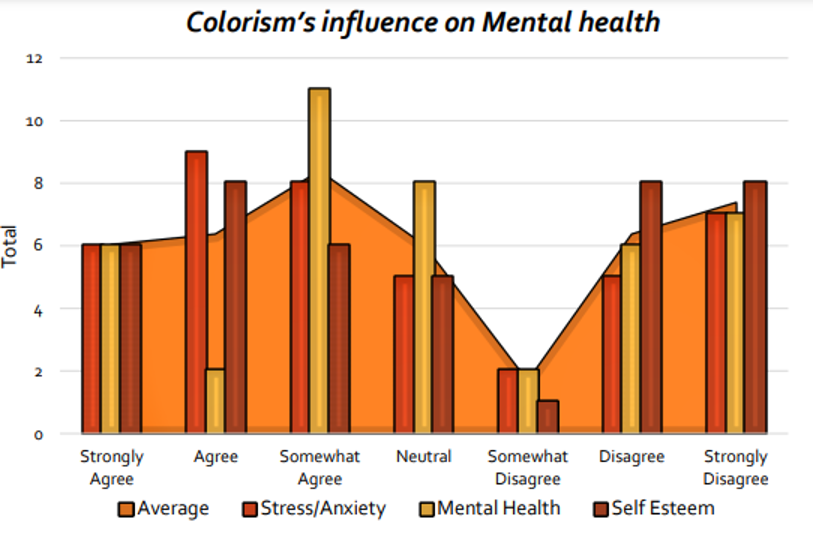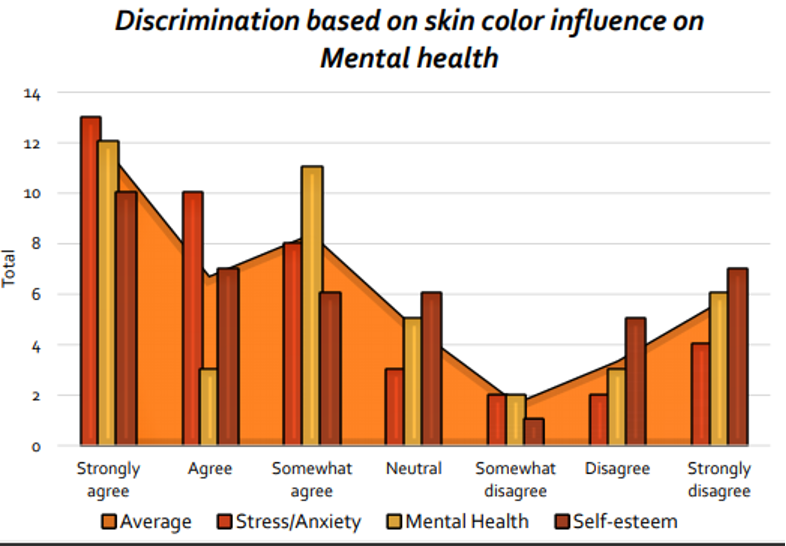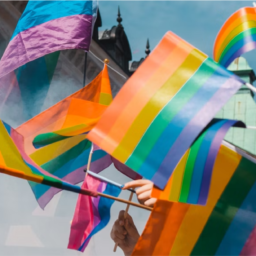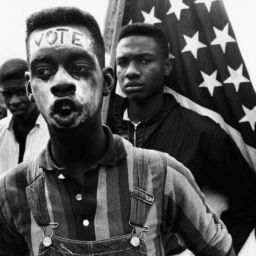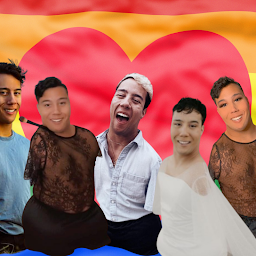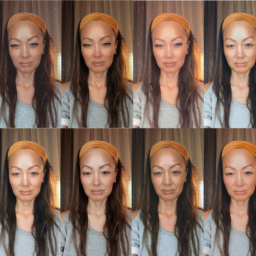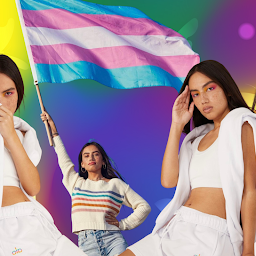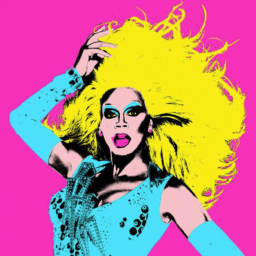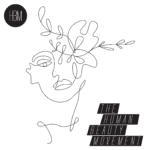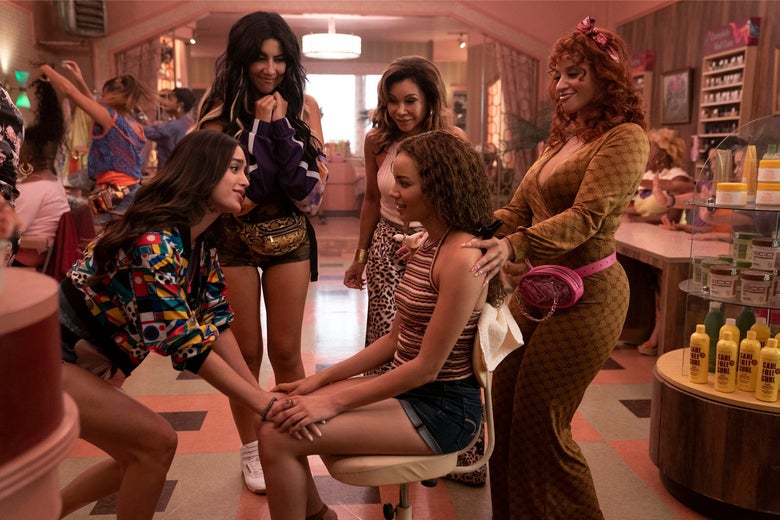
What is Colorism?
Colorism refers to the act of discriminating based upon skin color. In the United States, colorism has typically disadvantaged those with dark skin and privileged those with light skin. Though often associated with race discrimination, colorism occurs even within specific racial and ethnic populations.
The following children’s rhyme, chanted in homes and on school playgrounds for generations, embodies the long-standing issue of colorism in 4 simple verses:
If you’re black, stay back;
If you’re brown, stick around;
If you’re yellow, you’re mellow;
If you’re white, you’re alright.
It’s no wonder so many children grew up infused with color prejudice – it was ingrained into the social beliefs of youth through even the most “innocent” of activities.
Over time, colorism seeped into classrooms, workplaces, places of worship, and social clubs. Magazines, television shows, and movies became saturated with its overtones and undertones. With so much awareness over racial injustice and discrimination in recent years, progress has been made to educate the masses and create meaningful change towards color equality and unification around the globe. But there is still so much work that needs to be done. We must continually seek to increase learning, understanding, and human kindness so colorism can once and for all be combated and, better yet, dismantled.
The Origins of Colorism
Throughout history, and throughout the world, there have been innumerable accounts of how skin color impacted perceived attractiveness, socioeconomic status, and/or employment. Though the reasons for color discrimination may have varied by nation, race, or ethnic group, the bottom line remained consistent: colorism led to inequality and injustice.
Slavery, Race, and Colorism
The African American Story
In America, colorism emerged broadly when slavery was common practice. Owners typically favored slaves with fairer complexions. Lighter-skinned slaves were more often permitted to work indoors doing less grueling tasks than their darker-skinned counterparts.
The “Brown Paper Bag Test” was commonly performed, whereby a slave owner would hold up a brown paper bag to a slave’s skin. If the slave’s skin was darker than the bag, the slave would not be admitted for indoor work, nor given special privileges.1
Additionally, light-skinned children of slaves were usually telltale signs of sexual assault.2 Though slave owners didn’t officially recognize their mixed-race children, those children would often receive privileges that other dark-skinned children would not. As such, lighter skin tones came to be viewed as an asset in the community of black enslaved individuals.3
The Latin Story
Lighter skin tone preference within the Latin community was rooted under Spanish colonial rule, which emphasized the legitimization of sangre pura, or pure blood. Individuals could petition the Spanish crown for a certificate proving that an individual’s blood was “blood cleansed,” known as a cedula de gracias al sacar.4 This certificate was often desired to access further privilege, and it served as proof to others that they were not “tainted” with African blood.
The Asian Story
In Asian countries, colorism is said to have predated contact with Europeans. It relates more to class and rank than to white supremacy.5 In Asian culture, light skin tone is perceived as a sign of status, beauty, and wealth because members of the ruling classes had lighter complexions than peasants.6
Peasants usually labored outdoors in the sun each day which darkened their skin. The upper class had the privilege of remaining indoors which kept complexions fair. Thus, dark skin became associated with lower-class laborers, while fair skin tones became a sign of the wealthy and elite.7
Additionally, in 19th century Japan, members of the upper class would don white-lead powder makeup to indicate their status.8 Today, Japanese women still wear said traditional makeup when dressed in formal kimonos for celebrational occasions, and sometimes, it is also worn with Western clothes.
Colorism Statistics
The 21st century has been deemed a new era for human evolution and prosperity; however, many ethnic groups are still facing the oppressive cycle of colorism. People are negatively affected every single day due to colorism, as many research studies report.
- According to a study at Villanova, light-skinned women were sentenced to approximately 12% less time behind bars than their darker-skinned counterparts.9
- A 2006 study administered by the University of Georgia found that employers prefer light-skinned men to dark-skinned men, regardless of their qualifications.10
- A Law Professor at Vanderbilt, based on a study of 2,000 immigrants from around the world, concluded that those with the lightest skin earned on average 8-15% more than similarly qualified immigrants of darker hues.11
- Dark-skinned Brazilians make up 63% of the poorest sectors in Brazil.12
- India’s skin lightening cream, Fair and Lovely (note the name) boasts 38 million users worldwide.13 The brand, though, will be changing its name due to petitions demanding the word “fair” to be dropped.
- A study conducted by the University of Florida found that colorism is linked to body dysmorphia, anxiety, and depression. Physical illnesses such as high blood pressure and hypertension are also associated with colorism.14
Source: University of Florida
Source: University of Florida
Colorism in Media
In Hollywood, individuals with darker skin tones have historically been given less positive attention and have usually been portrayed with certain negative stereotypical traits. In addition, many people who are of darker skin tones usually have a harder time becoming successful. Movies, video games, ad campaigns, television shows, and online videos are all perpetrators of colorism, whether intentional or unintentional.
There has been an increase of dark-skinned people landing leading roles in movies and television shows, such as Viola Davis playing the lead role in How to Get Away With Murder and the entire cast of The Black Panther consisting of mostly dark-skinned African Americans.
Furthermore, shows like Black-ish, Grown-ish, The Baker and the Beauty, and Never Have I Ever address many issues that ethnic communities face daily, but even so, Black-ish, for example, still has a cast of predominantly lighter-skinned Black actors.
So where is the representation? Our television screens hold the key that perpetually opens and closes the door of colorism. We move forward on the quest to eliminate colorism, and yet, the key turns again; causing colorism to flare back up in even the most well-intentioned films. Case in point: In The Heights.
In The Heights
The film adaptation of In The Heights, based on the popular stage musical by Hamilton creator Lin-Manuel Miranda, was expected to be a much-needed celebration of the diverse Latin community in Washington Heights, NYC. However, after the highly anticipated opening, social media went on a rampage. Washington Heights happens to be a heavily Dominican Republic neighborhood, where most people are of Afro-Latin descent. But most of the actors cast were light-skinned, leaving a perceived lack of dark-skinned Afro-Latin representation.
How did a story that was supposed to portray the Washington Heights community miss the mandate to cast dark skinned Latin actors? Many critics blame colorism, suggesting that even Miranda and Asian director John Chu favored the subliminally more attractive lighter-skinned actors to appeal to a broader audience.
Pictured: In The Heights Source: IMDB
How to Confront and Dismantle Colorism
Colorism remains a slippery, insidious phenomenon. It often leaves the perpetrator unaware of his or her own bias, making the issue difficult to recognize, confront, and combat. It requires one to look inward and outward to fully assess the impact of living a “color-blind lifestyle”. But it must be addressed openly and diligently to make progress toward a more equitable society.
Here are a few ways to combat and dismantle colorism:
- Colorism can impact a person’s sense of self and confidence, so when someone feels discriminated against by colorist behavior or language, listen. Ask how the person feels while using active listening to intently learn about the person’s point of view. Seek to first understand.
- Be Aware of Language. “Sticks and stones may break my bones, but words will never hurt me.” We’ve probably all said or heard this quote, but the fact of the matter is that words do hurt. Being aware of colorist language and avoiding its use are steps in the right direction.
- Say Something. It is crucial to speak up when you see and hear colorism. Silence communicates passive acceptance, which only propagates the problem. There is no need to pick a fight. Instead, be kind, firm, yet direct about how specific words and actions are perpetuating colorism.
- Start the Hard Conversations. You may feel anxious about speaking up against colorism, or you may be fearful of saying the wrong thing. Try to keep things calm and respectful to help others understand you are doing your best to be helpful and recognize the harm actions can cause. Inviting someone to learn about colorism can go a long way.
- Challenge Yourself. Keep educating yourself about colorism and seek out the knowledge and perspective of victims. There’s always more to learn. Try this toolkit to further your knowledge of colorism.
- Change Hollywood. It’s time that we stand up against colorism on big and small screens. Color of Change is working to do exactly that with their #ChangeHollywood If you’d like to join them, click here to check out their #ChangeHollywood roadmap.
Practice these tips, avoid color bias, and spread your knowledge to others. Share this article with as many people as you can. Offer suggestions in the comments section below. Together, we can help ourselves and each other. Together, we can dismantle colorism.
—
References:
https://opinionatedblackwoman.wordpress.com/2016/12/06/if-youre-black-stay-back/ [1]
https://www.nccj.org/colorism-0 [2]
https://www.jstor.org/stable/2781783 [3]
https://www.law.uci.edu/lawreview/vol3/no4/Jones.pdf [7] [8]
https://journals.sagepub.com/doi/10.1111/j.1467-9280.2006.01716.x [9]
http://www.theinclusionsolution.me/the-impact-of-colorism/ [10] [11]
https://msmagazine.com/2010/03/28/what-can-we-do-about-colorism/ [12]
https://www.bbc.com/news/world-asia-india-53182169 [13]

